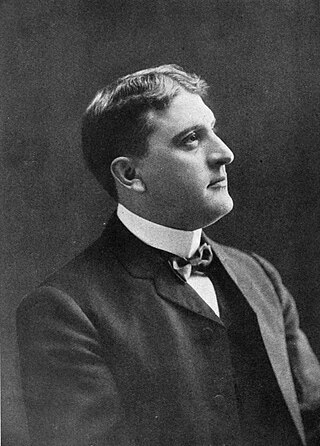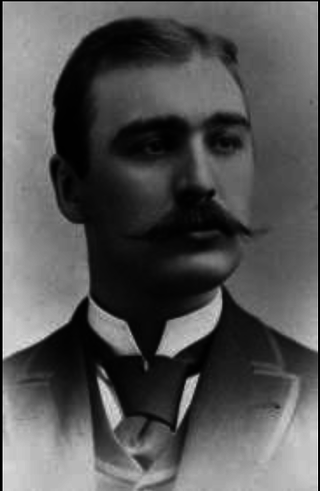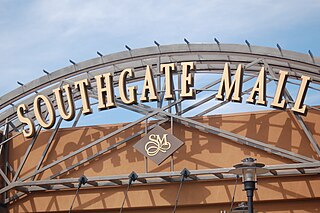Broadcast Media
Missoula is home to 4 AM radio stations and 17 FM stations as well as 4 primary television channels.
History
Missoula's first radio station, KGVO (Great Valley of Ours) was launched January 18, 1931 by Arthur James Mosby, who had moved to Missoula in 1922 and constructed a transmitter from a diagram and parts list in an amateur radio magazine. With the station, Mosby is credited as being instrumental in bringing the CBS Radio Network to Montana. [17] [18]
In 1941 Mosby hired future national radio broadcaster Paul Harvey. Harvey enjoyed Missoula, and it is here that he developed his unique style of highlighting the softer side of news. He and Mosby quickly became and remained friends until Mosby's death in 1970, with Harvey giving an on-air birthday wish for Mosby's 80th birthday and short eulogy after his death two years later. However, in the summer of 1941 Mosby called Harvey into his office to offer him a job in the sales department because, according to Mosby, Harvey was a great salesman but had a "silly and funny sounding voice" that couldn't be taken seriously enough for him to be reporting the news. Harvey would not take the offer and would leave Missoula, but he would oddly credit Mosby for pushing him up through his career by kicking him out. [19]
In the summer of 1954, KGVO-TV, also owned by Mosby, became Missoula's first television station. Programming began at only four hours a day, and the station carried programming from the three broadcast networks though the station was a primary CBS affiliate given its relationship with its sister radio station KGVO. The station would briefly become KMSO-TV in 1957 but would revert to KGVO-TV in 1964 and would use the call letters until 1978 when the station became the current NBC affiliate KECI-TV. [20] Missoula's second station, KPAX-TV, began as a satellite station from Butte in 1970 before becoming a full-fledged broadcaster in 1977. KPAX was started by Joseph Sample to join his Montana Television Network with the intention of uniting Montana's diverse areas while grouping them together for the national advertising market. [21] [22] KPAX acted as a CBS-ABC affiliate until KTMF came online in 1991 as the ABC affiliate. Missoula's FOX affiliate KMMF opened in 2002 but was shut down on June 12, 2009, when analog broadcasting ended. Montana PBS, KUSM-TV, signed on for the first time on October 1, 1984, making Montana the last state to have its own PBS station.
List of broadcast stations in Missoula
| Call Letters | Station | Affiliate | Owner | Founded | Slogan | Website | Call Letters Origin | ||||
|---|---|---|---|---|---|---|---|---|---|---|---|
| KPAX-TV | 8 | CBS/MTN, Independent (DT2), Grit (DT3) | E. W. Scripps Company | 1970 | "Fair, Accurate, To the Point" | www.kpax.com | Green Bay Packers | ||||
| KUFM-TV | 11 | PBS, DT2 PBS Kids, DT3 Create, DT4 PBS World DT5 TVMT simulcast | Montana State University The University of Montana | 1984 | www.montanapbs.org | University oFMontana | |||||
| KECI-TV | 13 | NBC, MeTV (DT2), This TV (DT3) | Sinclair Broadcast Group | 1954 | "Earning Your Trust, Everyday" | www.nbcmontana.com/keci/index.html | Eagle Communications Incorporated | ||||
| KTMF | 23 | ABC, Fox/MyNetworkTV (DT2) | Cowles Company | 1991 | www.nonstoplocal.com/missoula/ | ||||||
| Call Letters | Frequency | Branding | Genre | Owner | Founded | Slogan | website | Call Letters Origin | |||
| AM | |||||||||||
| KMPT | 930 | Talk radio | Townsquare Media | 2007 | "Missoula's Conservative Talk" | www.klcy930.com/ | Missoula's Progressive Talk | ||||
| KGVO | 1290 | News Radio 1290 | News radio | Townsquare Media | 1931 | "Voice of the Grizzlies" | www.kgvo1290.com/ | Great Valley of Ours | |||
| KYLT | 1340 | 1340 KYLT | Talk radio | Cherry Creek Radio | "Your Home for Fox Sports Radio in Western Montana" | ||||||
| KGRZ | 1450 | Sports Talk 1450 | Sports radio | Cherry Creek Radio | GRiZ | ||||||
| FM | |||||||||||
| KJCC FM | 88.3 | Religious Ministry | |||||||||
| KUFM-FM | 89.1 | Montana Public Radio | Public radio | University of Montana | 1965 | "Makes Montana Sound as Good as it Looks" | www.mtpr.net | University oFMontana | |||
| KBGA | 89.9 | KBGA College Radio | Free-form/Student | University of Montana | 1996 | "Your College Radio Station" | www.kbga.org | Todd Graetz, Greg Bourriague, and Craig Altmaier [23] | |||
| KGGL | 93.3 | Eagle 93 | Country music | Cherry Creek Radio | 1995 | www.eagle93.com | Eagle | ||||
| KYSS | 94.9 | 94.9 KYSS-FM | Country music | Townsquare Media | 1978 | "Real Country" | www.kyssfm.com | ||||
| KBAZ | 96.3 | The Blaze | Mainstream rock | Townsquare Media | 2000 | "Missoula's Rock Station" | www.963theblaze.com | ||||
| KDXT | 97.9 | The Ranch | Country | Mountain Broadcasting | 2006 | The Ranch | www.moclub.com/ | ||||
| KHKM | 98.7 | Oldies | CCR-Missoula IV, LLC | 2001 | "The Coolest Rock 'n' Roll Hits of All Time" | www.b106.7.net | |||||
| KXDR | 98.7 | Star 98.7 & 92.7 | Top 40 (CHR) | Cherry Creek Radio | 1998 | "The Valley's #1 Hit Music Station" | www.starfm.net | ||||
| KZOQ | 100.1 | Z100 | Classic rock | Cherry Creek Radio | 1979 | "Missoula's Only Classic Rock Station" | www.kzoq.com | ||||
| KFGM-FM | 101.5 | Missoula Community Radio | Community radio | Missoula Community Radio | 2007 | https://www.1015kfgm.org/ | View | ||||
| KMSO | 102.5 | Mountain 102.5 | Adult Top 40 | Mountain Broadcasting | 1984 | "Today's Hits, Yesterday's Favorites" | www.moclub.com/mountain.php | Missoula | |||
| KDTR | 103.3 | Trail 103.3 | Adult album alternative | Spanish Peaks Broadcasting | 2005 | "Missoula's Quality Rock" | www.trail1033.com | ||||
| KKVU | 104.5 | U 104.5 | Adult Top 40 | Spanish Peaks Broadcasting | 2005 | "Missoula's Best Variety of Fresh Music" | www.fresh1045.com | ||||
| KYJK | 105.9 | 105.9 Jack FM | Adult hits | Spanish Peaks Broadcasting | 2005 | "We Play What We Want" | www.1059jackfm.net | ||||
| KENR | 107.5 | 107.5 Zoo FM | Top 40 (CHR) | Townsquare Media | 1998 | "Zootown's Hit Music Station" | www.1075zoofm.com | ||||










